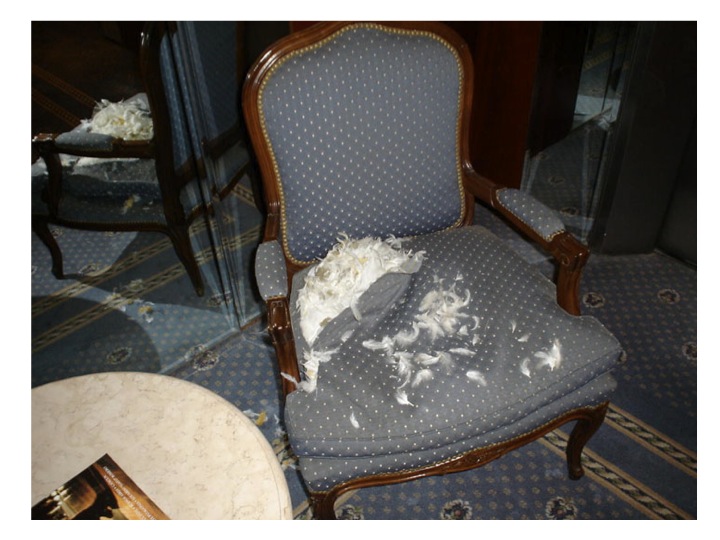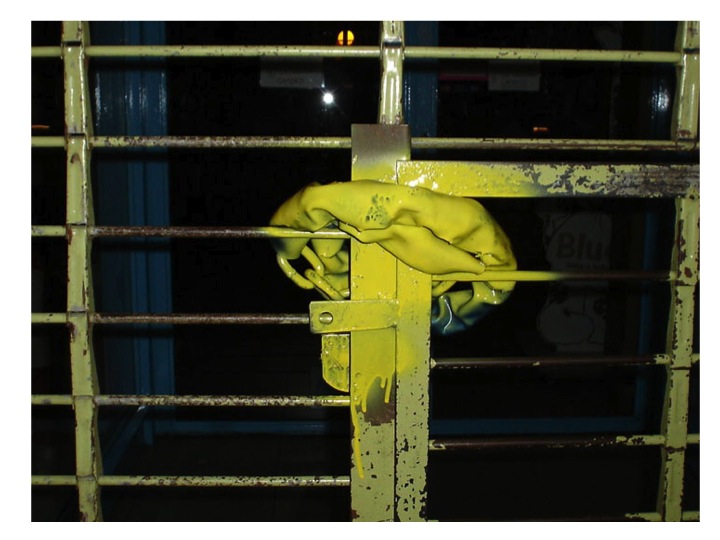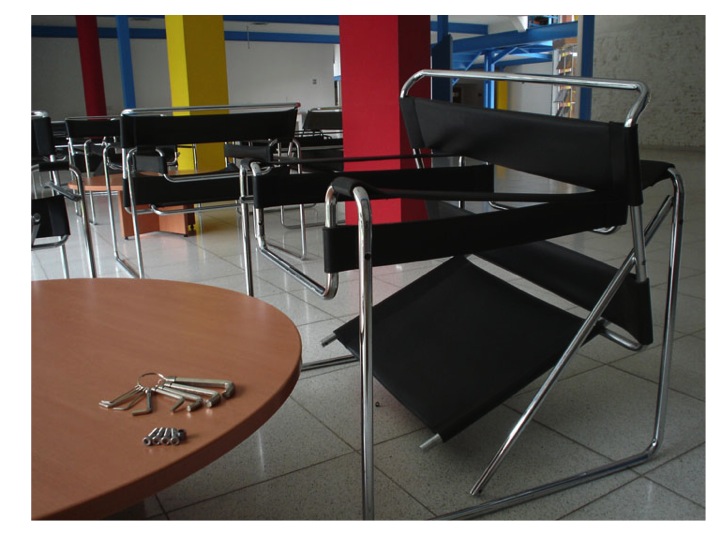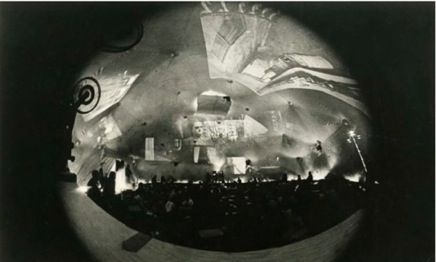Recent Articles
-
Invites First Post!
-
Of Interest – Luciana Lamothe
-
The document as gesture: ‘Zoned Out’ by Jose Manuel Castrellón
-
Arja Hyytiäinen – NOTES (exhibition in ZPAF i S-ka Gallery, Cracow from October 17th to December 6th 2008)
-
Exhibition Review – Stan VanDerBeek (On view at Guild Greyshkul thru Oct. 18)
Categories
- #SANDY
- 2016
- 27th International Festival of Photojournalism
- Aaron Vincent Ekraim
- Africa
- AIPAD
- Almond Garden
- American Photo
- Anna Beeke
- Aperture
- Art Desks
- Artist Events
- Artist talk
- Award
- Awards
- Barmaid
- Barney Kulok
- Behold
- Best of 2015
- Book Launch
- Book release party
- book signing
- Book signings
- Book-signing
- Bryan Schutmaat
- Call for applicants
- call for entries
- Cara Phillips
- CDS
- Chicago
- ClampArt
- Closing Exhibition
- Competition
- Conservation photography
- Contests
- Cowgirl
- Critical Mass
- Cyril Christo
- Daily Mail
- Daylight
- Daylight Books
- Daylight Digital
- Daylight Digital Feature
- Daylight Photo Awards
- Daylight Project Space
- dj spooky
- Documentary Photo
- DPA
- Dread and Dreams
- E. Brady Robinson
- Eirik Johnson
- Elaine Mayes
- Elinor Carucci
- Events
- Every Breath We Drew
- exhibit
- Exhibition
- Exhibitions
- Fall 2015 Pre-launch
- Festivals
- Film Screening
- Film screenings
- Fine Art
- Flanders Gallery
- Fotobook Festival Kassel
- Françoise Callier
- From Darkroom to Daylight
- Frontline Club
- Gabriela Maj
- Gays in the Military
- george lawson gallery
- GuatePhoto
- Guatephoto Festival
- Hariban Award
- Harvey Wang
- hochbaum
- Home Sweet Home
- Huffington Post
- Hurricane Sandy
- Interview
- J.T. Leonard
- J.W. Fisher
- Janet Mason
- Jess Dugan
- Jesse Burke
- John Arsenault
- Jon Cohen
- Jon Feinstein
- Katrin Koenning
- Kuala Lumpur Photo Awards
- Kwerfeldein
- L'Oeil de la Photographie
- LA
- Landmark
- Leica Gallery
- Lenscratch
- LensCulture
- Library Journal
- Lili Holzer-Glier
- Lori Vrba
- Lucas Blalock
- Malcolm Linton
- Marie Wilkinson
- Mariette Pathy Allen
- Michael Itkoff
- Month of Photography Los Angeles
- Mother
- Multimedia
- Nancy Davidson
- New York
- New York City
- News
- NYC
- ONWARD
- Opening
- Opportunities
- Ornithological Photographs
- Out
- Party
- Philadelphia
- Photo Book
- Photo Booth
- photo-book publishing
- PhotoAlliance
- Photobooks
- Photography
- Photography Festival
- photolucida
- Poland
- portal
- Pre-Launch
- Press
- Prize
- PSPF
- Public Program
- Raleigh
- Rayko Photo Center
- Recently
- Rencontres De Bamako
- Reviews
- Robert Shults
- Rockabye
- Rubi Lebovitch
- San Francisco Chronicle
- Seeing Things Apart
- SF Cameraworks
- silver screen
- Slate
- slideluck
- Sociological Record
- Soho House
- spring 15
- Spring 2016
- Stephen Daiter Gallery
- Sylvania
- Talk
- Tama Hochbaum
- The Guardian
- The Moth Wing Diaries
- The New Yorker
- The Photo Review
- The Solas Prize
- The Superlative Light
- The Telegraph
- TIME
- Timothy Briner
- Todd Forsgren
- Tomorrow Is A Long Time
- TransCuba
- Upcoming events
- USA Today
- VICE
- Vincent Cianni
- Visa Pour L'Image
- Vogue
- We Were Here
- Wild & Precious
- Wired
- Workshop
- Zalmai
- Zofia Rydet
News
Invites First Post!
Posted by Daylight Books on
Some time ago friend and photographer, Bill Sullivan and I were brainstorming about the blog and what it could and could not do. It occurred to us that far too often many were trying to impose older (non internet) forms upon the photography blogs rather than focus on what they are indeed good at. It also became clear that the blog was a wonderful way to get insight into ones artistic character. With this in mind we approached a few museums with the idea of creating a blog residency. Where for one month an artist who normally doesn't do much blogging would be invited to post. None took us up but we held the idea until Taj asked me to contribute to the Daylight blog. We thought not only could it provide accessibility to an artist who normally doesn't have that sort of broadcast., but it could be a further understanding of concepts, influences and working process.
So here's the guidelines/rules on Invites.
-
• Artists will post (at least) 5 posts. They can post as many as they like in the one month period.
-
• Readers can post questions to artists in the each monthly intro of the artist. It is up to the Invitee as to whether or not they respond to all or any of those questions. There are a few reasons for this, one being that we don't want the content of the Invitee posts to be only dictated by the readers. Another is most are simply so busy (which is why they don't have blogs themselves).
That's as complicated as it gets now on to our first Invite!
Of Interest – Luciana Lamothe
Posted by Daylight Books on
Luciana Lamothe is a criminal. Born and raised in Buenos Aires, Argentina, she stalks the streets of her home city, making mischief and sowing mayhem at all hours of the day and night: overturned potted plants; the doorbells of whole apartment blocks rung incessantly; padlocks added onto chains, necessitating bolt cutters; chairs deconstructed in swanky lobbies; cans of paint spilled. What (perhaps) makes Lamothe different then your run-of-the-mill petty criminal is that she positions her acts of vandalism as urban interventions, designed to rearrange, reimagine, and generally shake up urban space. Also, she takes pictures.

Formally trained at the Prilidiano Pueyrredon Nacional School in Buenos Aires, Lamothe’s work, which also extends into sculpture, assemblage, and installation, marries the aesthetics of vandalism to the legacy of conceptual artistic practice. Her work interrogates the dialectical relationships between construction and destruction, the social and the anti-social, and--possibly unintentionally--the revolutionary and the merely destructive. Recently, her work was included in the 5th Berlin Biennial, where she created a site-specific work in front of the Palast der Republik, the former seat of the East German parliament that is in the process of being demolished, which explored the social implications of architectural memory and it’s erasure.
Looking at the photographs of her urban interventions, it almost seems as if Lamothe’s pictures could have been made by Gabriel Orozco run amok, as if he got fed up with his delicate brand of incidental poetry and decided to rip apart the system one brick at a time. As an aesthetic strategy, however, Lamothe’s photographs perhaps most closely resemble Guy Debord’s 1959 book Mémoires, which was, famously, bound in sandpaper so that it would damage books that it was placed next to on the shelf. Of course, like Debord’s gesture, Lamothe’s interventions have questionable political efficacy—but they certainly have teeth.


The document as gesture: ‘Zoned Out’ by Jose Manuel Castrellón
Posted by Daylight Books on
A hundred years after the invention of the Lippman plate, whose colours and textures are suggested by the work of Jose Manuel Castrellón, it seems like photography has never been as free as it is today. Similar to the process that painting went through about a century ago, photography has been left behind by video and other forms of reality-recording; thus it is dismissed from any obligation to be objective. With this, it has acquired the intentional hue that it rarely possessed before. Now it is much less about the decisive instant (although its shadow shall linger for its entire existence) and much more about the narrative, expressive, exclaiming gesture. About the intention of that gesture, which rises from the need to express oneself.
Along with, and perhaps, in spite of all this, documentary photography is undergoing a new golden era. The paradox is only apparent as the discipline has also experienced profound changes in its intentional genesis – a late coming of age with regards to the (im)possibility of an expected objectivity. One needs only to remember photographers like Bernd and Hilla Becher (whose industrial structures Castrellon seems to evoke) or the American photographer Paul Shambroom to realize that, even when a documentary intention prevails, the discourse makes itself evident through a particular aesthetic formalization. Maybe our way of reading photography has also changed, but then again, in a world that produces millions of images on a daily basis, this was something inevitable and leads, invariably, to the spontaneous assignation of surreptitious meanings.
‘Zoned Out’, Panamanian photographer Jose Manuel Castrellón’s latest series, seems to adequately fall within these two lines, foundational pillars in the discourse of contemporary photography today. On one hand because it portrays but also tells, remembers but also inquires, describes but also suggests. There is a clear discursive intentionality related to the photographer’s background, Panama City’s history, the Canal Zone and of the people that used to live there. On the other, because in the portrayal of those lost paradises in the former Canal Zone, there is a way of approaching it that belongs only to the artist and to whoever sees it.
In a moment in which the Bienal de Art de Panamá has made the Canal Zone the subject of its 8thedition, it is encouraging to think that these sorts of proposals are fruitful in generating a dialogue that goes beyond the institution itself. In the same way, it is refreshing that contributions not generated from within that framework assist in the analytical process of a city whose typo- and morphological characteristics are in constant change, whether it is due to the outrageous amount of construction going on or whether it is because entire areas (such as the Zone, precisely) are in a stage in which their own identities are being revised.
With an incisive gaze, Castrellón portrays something that is not (there) anymore. These images draw the visual map of some of his memories making use of that lack of precision of recollections badly kept. Flat colours and able compositions generate an atmosphere of a certain melancholy in which the aforementioned intention is neatly outlined. In this case, that of observing a part of the city that now belongs to him but that has mutated, that is different, that perhaps is just a different city. This is also an exercise of place –and perhaps– memory appropriation in the construction process of his own identity, as a Panamanian, as a photographer.
A well-executed exercise, it is quite evident that Castrellón's insightful eye will continue to capture many other places trying to find, in each one of them, the right image through a gesture that intends to discover and take a stand.
‘Zoned Out’ is on view in DiabloRosso (Calle 48, Bella Vista, Panama City) until November 8th.





Arja Hyytiäinen – NOTES (exhibition in ZPAF i S-ka Gallery, Cracow from October 17th to December 6th 2008)
Posted by Daylight Books on
Arja's photographs tell emotional stories combining her life with her art. In one example intimate human relations lead us to the floor boards of Swedish country houses and in rough casted private rooms in eastern European apartments, where the emotional world of the protagonist is created by a mattress on the floor and a sheet soaked through with the smell of the previous night.
Arja is constantly travelling. She experiences and depicts encounters with the people in her path with great intensity. Her photography is a sign that our stories will never be told other than through the image of a single moment – the photographs are a love letter to anyone whom she meets on her journey, from a pigeon, to a lunatic, to the smell of the last night.

The work of the Finnish photographer is actually shown in ZPAF i S-ka Gallery in Cracow. Arja is represented by the VU Agency in Paris. After graduating at FAMU School in Prague she lives and works in Paris and Berlin. Over the last year Arja has shown her series “Journey” , “Medans” or “Distance now” all over Europa. She is constantly taking pictures and her recent exhibition titled “Notes” is a selection of the actual work.
Check out: www.zpafiska.pl/exhibitions
Exhibition Review – Stan VanDerBeek (On view at Guild Greyshkul thru Oct. 18)
Posted by Daylight Books on
Stan VanDerBeek was once a major figure of the New York avant-guard. He associated with luminaries like Claes Oldenburg, Jim Dine, Robert Morris, Allan Kaprow, and Yvonne Rainer, showed at major museums, participated in international art events, and worked as an artist-in-residence at NASA and M.I.T. In 1977, he was the subject of a retrospective at the Anthology Film Archives. But, since his death in 1984 at the age of 57, he has been largely forgotten.

Recently, though, it has begun to seem that VanDerBeek’s work may not be fated to molder in obscurity forever. Signs have been appearing that indicate a burgeoning revival: Paul McCarthy, who has a history of championing undeservedly obscure artists, organized a film program at the Whitney devoted entirely to VanDerBeek’s work; one of his photo collages appeared on the cover of the most recent installment of Charley, the publication put out every-so-often by Wrong Gallery collaborators Maurizio Cattelan, Ali Subotnick, and Massimiliano Gioni; and, his work has been cropping up in an increasing number of group shows around the country. But the current show at Guild Greyshkul, which could be billed as a mini-retrospective, is the greatest effort that has been made to bring VanDerBeek’s work back from the depths to date. This is not without good reason: the gallery was founded, in part, by two of VanDerBeek’s children, Sara and Johannes, and much of the work in the show—slides, films, videos, paintings, drawings, computer-generated prints, a vast wall of photomontages and film stills—was rescued by the younger VanDerBeeks from the basement of their mother’s house in Baltimore.
The show is a labor of love, and the work it contains is no different: it fairly crackles with frenetic creativity, the static discharge of a peripatetic life. One gets the impression, in fact, that VanDerBeek was working under some infernal deadline, which barely allowed time for his hands to keep up with the constant churnings of his mind. While this may sound like an over-Romanticization of the Modernist variety, it is certainly an apt case: the work is passionate and hurried, messy in the best sense of the word—without the mediation of the studied wink.
VanDerBeek began studying art at The Cooper Union in New York, and later attended the storied Black Mountain College, where he associated with the likes of Merce Cunningham, John Cage, and Buckminster Fuller. The show includes an ample selection of VanDerBeek’s paintings and drawings from this period, many of which betray an affinity for the visual works of William Blake. These works certainly have merit, but it is clear that VanDerBeek’s work didn’t truly flower until after he had finished his formal schooling, when he underwent a seemingly Damascene conversion that compelled him to begin working with film.
From the late 1950s onward, VanDerBeek produced reel upon reel of film, largely using painstaking stop-motion technique to animate collages of found photographs, which he often painted or drew on and intercut with found footage. Immediately, and with a certain shock of recognition, the films bring to mind the whimsical animations produced by Terry Gilliam for Monty Python’s Flying Circus, though VanDerBeek’s early films pre-date Gilliam’s by at least a decade. (This is not a coincidence: Gilliam has cited VanDerBeek as an early influence.) Despite their obvious initial consonances, however, VanDerBeek’s films move in realms beyond Gilliam’s reach: they are more pointedly satirical and wildly surreal, whipping together Khrushchev and DuBuffet, Ernst and Eisenhower, tribalism and technoromanticism to create a turbulent, oneiric vision of sex, death, and politics in the machine age.

The show has a great number of these films on view, and they are accompanied by a large and notable selection of his photomontages, many of which were used in the films’ production. Despite their technical designation as “film stills,” these are far from mere ephemera: even rent from their original context they are fascinating and inspired, and, in fact, often benefit from reintroduction of the color and tactility that was necessarily wicked from them in the filming process. (VanDerBeek’s films, with some notable exceptions, such as Science Friction (1959), were largely shot in black and white.)
VanDerBeek’s initial interest in film paved the way for his much broader interest in technology, which he viewed as a force that could be used to both expand traditional artistic practice and, if used wisely, allow artists to participate in—and possibly guide—a shift in global consciousness. This latter, quasi-Utopian formulation fueled much of his late creative output, which saw him experimenting with various vanguard technologies like computers, fax machines, and video cameras, creating increasingly ambitious and encompassing art environments, and authoring urgent-sounding manifestos to codify his aesthetic and theoretical positions.
Though he is not mentioned by name, it is clear that many of VanDerBeek’s ideas concerning technology were inspired by the then-fashionable and still-influential Canadian philosopher and communications theorist Marshall McLuhan—a few of VanDerBeek’s manifestos are even reminiscent, both visually and textually, of McLuhan’s landmark The Medium Is The Massage. This is, of course, not to say that VanDerBeek has engaged in any kind of intellectual plagiarism. Rather, it is remarkable how VanDerBeek takes McLuhan’s ideas about sensory expansion, visual learning, and then-incipient global information networks and transforms them into tangible projects that attempt to push McLuhan’s theory into practice
This tendency pushed VanDerBeek to produce a number of remarkable works that are also on view in the show—a large mural that VanDerBeek created in his Boston studio and then faxed piece-by-piece to the Walker Art Center in Minnesota for exhibition, quilt-like computer printouts, a pair of videos that were screened simultaneously on two separate Boston public access channels—but by far the most ambitious project that came out of this period was something VanDerBeek called a “Movie-Drome.” Essentially, the idea was this: Large dome structures would be erected in sites around the world, which would serve as hubs for the distribution of knowledge via the universal language of the information age—images. Programs at the various Movie-Dromes would be tailored to the needs and desires of local populations, and would draw on a limitless image library, parts of which would be stored electronically in each Movie-Drome, which would, in turn, be connected up to its fellows through a network of satellites, televisions, and telephones.
Obviously, this was a project that was never fully realized, or VanDerBeek might be credited with creating an imaginative precursor to the Internet. But, from 1963 to 1965 he did build a full-scale prototype of a Movie-Drome out of an abandoned grain silo up in Stony Point, New York. Inside, he held multi-media events that employed dozens of film and slide projectors to produce what he called “a super collage or movie mosaic.”

It would be nearly impossible to contain this kind of spectacle in a gallery space, but Guild Greyskhul has pared down the Movie-Drome’s aesthetic by presenting a recreation of one of VanDerBeek’s “Electric Assemblages,” a collage of slides and film projected on an overlapping thicket of free-standing screens. It is, with good reason, the centerpiece of the show. The work looks stunningly fresh, a testament to VanDerBeek’s aesthetic prescience as much as it is an indicator of the accuracy of his technological prognostications.
Though the Electric Assemblage is an apt summation of VanDerBeek’s singular artistic achievement, there is another, more modest work in the show that helps illuminate the ambitions that he had for art making as a whole. Tucked away in the little back room is a watercolor on which these words are painted: “Art Moves Through The Infinity Of Perhaps.” It is an aphorism, or perhaps a Koan, that furnishes us with the most succinct summation of VanDerBeek’s practice that anyone could hope to provide. For his art did indeed move through the infinity of perhaps, to such an extent that climbing inside his Movie-Drome now would feel like getting a view of the inside of our own skulls. One can only imagine, with not a small feeling of loss, what his work might look like now, if he had lived.
More information about Stan VanDerBeek, including a collection of his writings, can be found here.
A collection of Stan VanDerBeek's films, gathered by Guild Greyshkul with the help of re:voir and Electronic Arts Intermix, is currently available on UbuWeb.